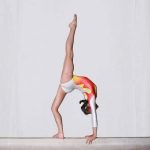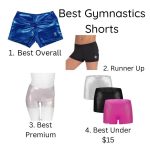Choosing the right type of gymnastics mat for home is crucial for both safety and suitability during practice. In our complete guide, we’ll help you navigate through the different options, highlighting the pros and cons of each one for home use.
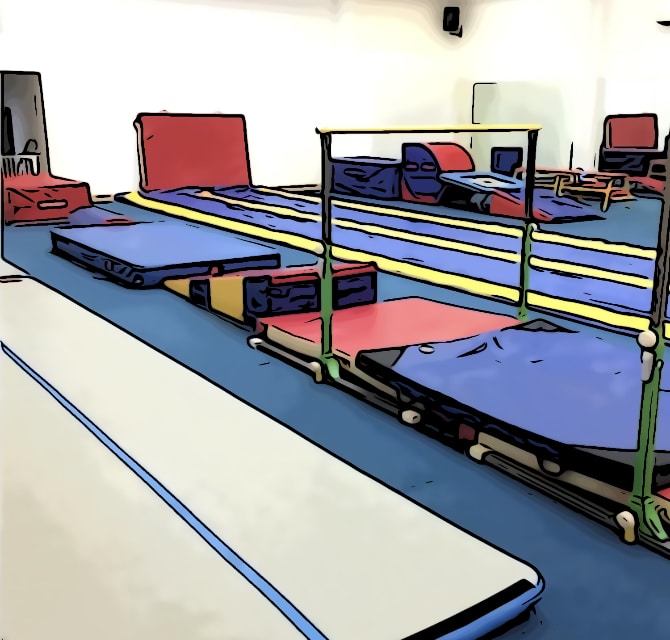
What are Gymnastics Mats?
Gymnastics mats are placed on the floor cushion landings and absorb the force created when a gymnast performs a skill.
The most common types of mats are used to perform floor skills such as tumbling and balancing. Inflatable mats are bouncier than normal mats and have become very popular with gymnasts training at home.
Incline mats are also relatively new and help gymnasts try new skills for the first time as they help create momentum.
What are gymnastics mats made of?
Most types of gymnastics mats are made of foam and covered in PVC vinyl to make it easy to clean and comfortable to land on.
A traditional gymnastics floor mat is covered in carpet so that it has less friction and competitive gymnasts can perform routines without the fear of slipping over.
Types of Gymnastics Mats
There are six types of gymnastics mats. They all have a different purpose – most are suitable for home use but bigger types of mat will need a lot of storage space and are more suited for professional gym facilities.
| Suitable for home use? | Ideal For | ||
| Folding or Panel Mat | 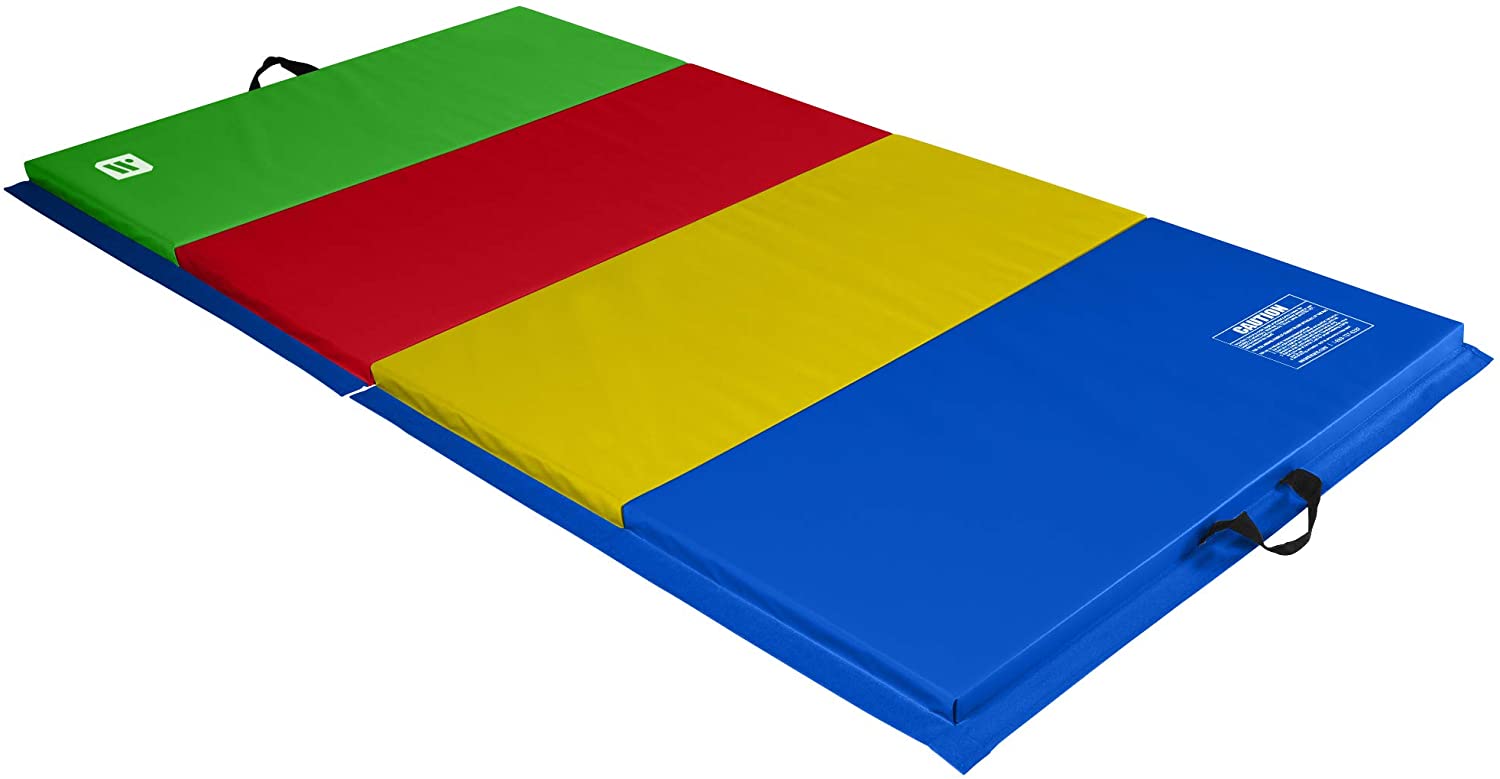 | Yes | Rolling / Cartwheel / Handstand / Bridge / Basic Skills |
| Cartwheel Mat |  | Yes | Cartwheels / Basic Skills |
| Flexi Roll Foor | 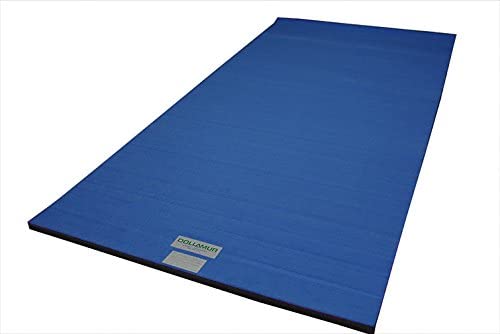 | Small size only | Basic Tumbling / Flexibility |
| Incline or Wedge Mat | 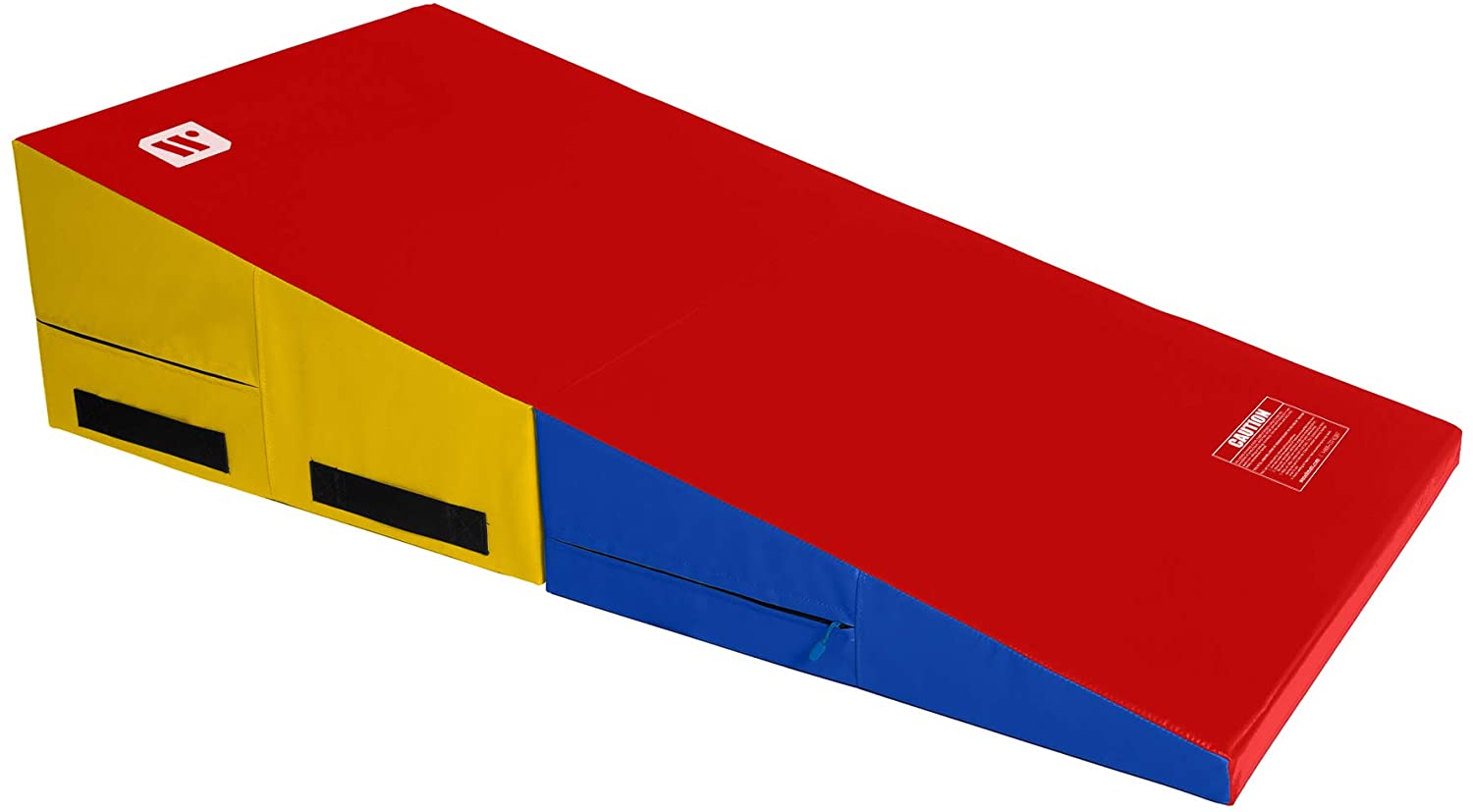 | Yes | Rolling / Walkovers / Back Handspring |
| Landing Mat | 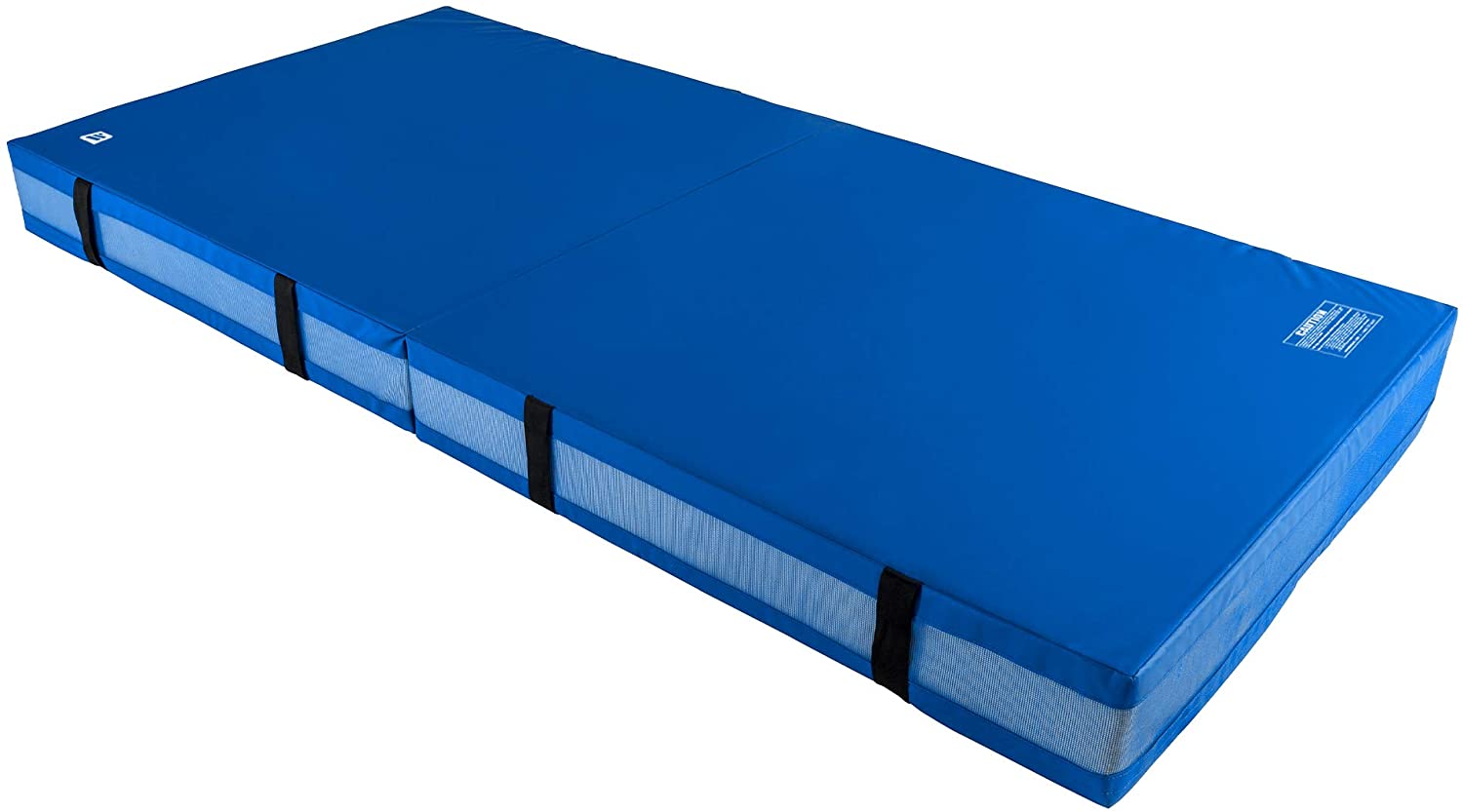 | Small size only | Underneath bars / Beam dismounts / Vault |
| Air Mat (also called Air Track) | 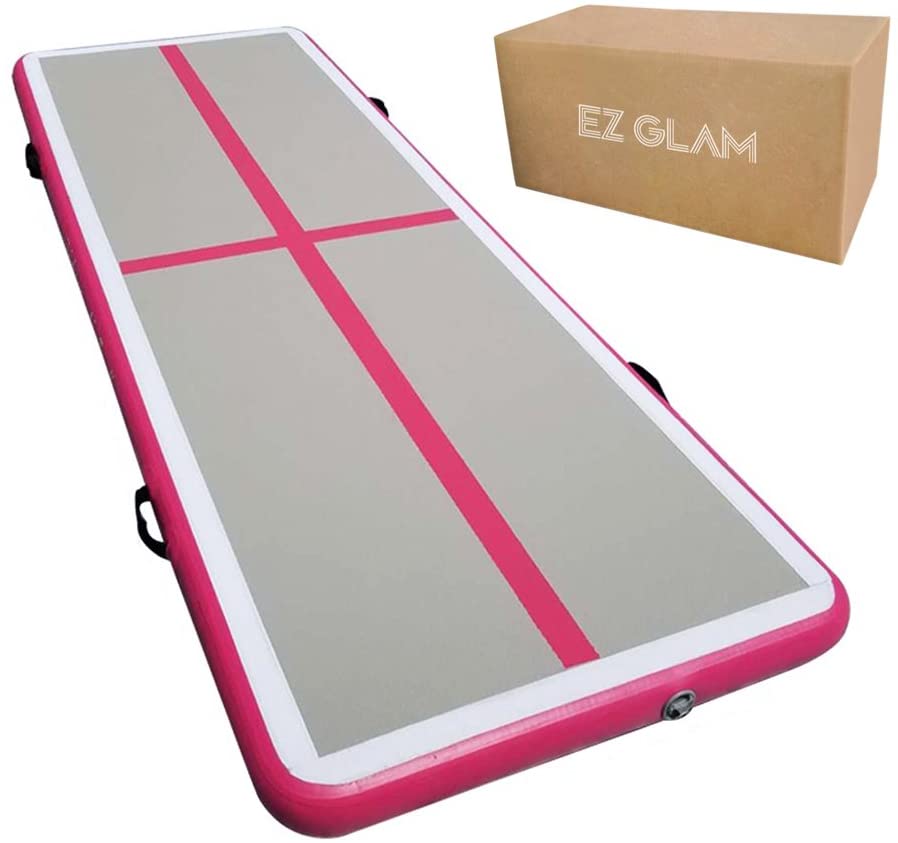 | Yes (check size carefully) | Basic and Advanced Tumbling |
You can do most types of gymnastics on mats at home although they are best suited for basic skills that don’t require as much space as a professional gymnastics sprung floor.
Panel Mats
Panel mats (home versions are sometimes called folding mats), are usually smaller and can be used for basic floor skills like forward and backward rolls, cartwheels, handstands and bridges. Panel mats can also help with jumps, leaps and balances. They are ideal for beginners.
Cartwheel Mats
Cartwheel mats are very similar to panel mats in size and material but will have the hand and feet placement marked out for cartwheels. On the reverse of the mat you can usually find either hopscotch markings or a beam line marked out. These are also ideal for beginners.
If you want to add slightly more advanced moves like round off, back handspring or aerial you should consider using a Flexi-Roll mat. Sizes vary but they tend to be bigger than a panel mat so you can fit more skills onto it.
Flexi Roll Mats
Flexi-roll mats have a carpet layer on top which is exactly the same as a professional sprung floor. These types of mats were first created by Dollamur.
Incline Mats
Incline (or wedge shaped) mats are great if you need a bit of extra help to do rolls, walkovers or even learning back handsprings. The downwards slope gives the gymnast additional momentum to turn moves over. Because they’re not flat you only really use Inclines to learn new skills.
Landing Mats
Landing mats are thicker than panel mats and can therefore absorb more impact. This makes them ideal for placing under a bar or behind a vault as they cushion drops from a bigger height.
However, they are are not suitable for tumbling on as the softness makes it to difficult to jump or rebound from.
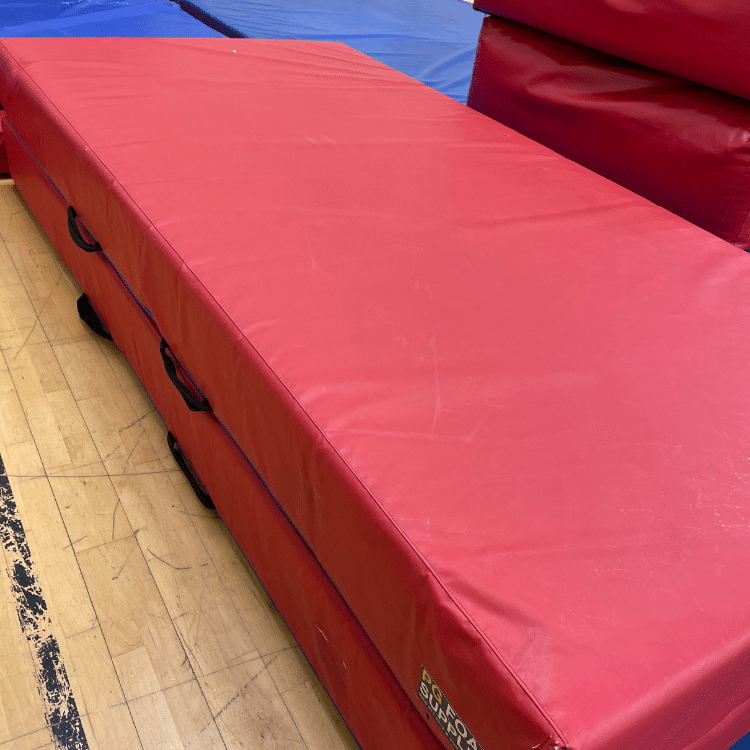
Inflatable Air Mats
If your looking for something with more bounce then an Air Mat is for you! You can perform any of the moves already mentioned but the inflatable nature of the mat will give you extra air time – great for those advanced tumbling skills.
Are gymnastics mats safe for home use?
Gymnastics mats are safe for home use as long as you have adequate space. You need to avoid using the mat close to furniture, walls and doors. Also, be careful of the flooring that you put the mat on top of. If you are placing a mat on top of hard flooring and you miss the end or side, the impact of the hard floor can cause an injury.
Only practice skills that you can do safely on a gymnastics mat at home. Even the best quality mats will not stop you from hurting yourself during a Back Handspring or Back Tuck if you mess up.
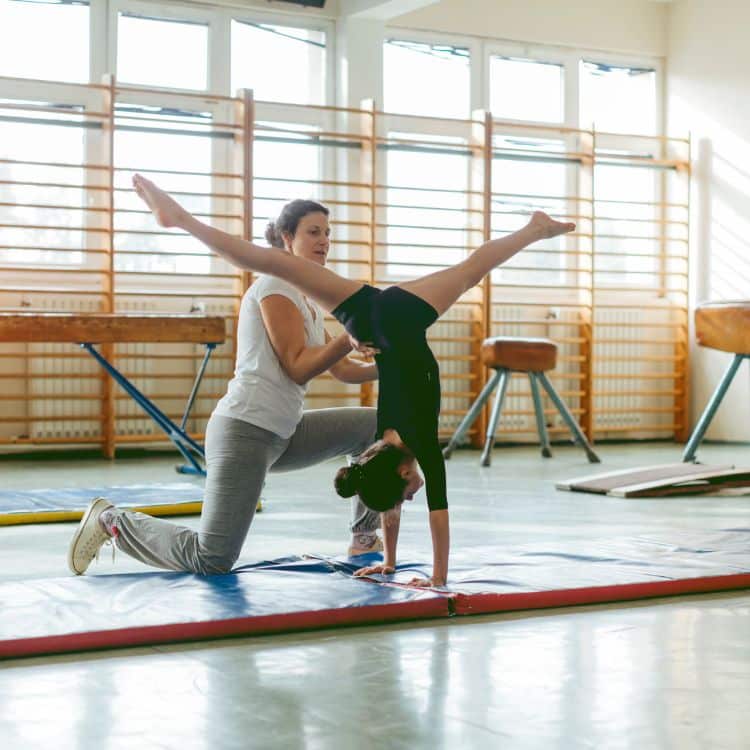
Nothing replaces the safety of a professional gymnastics coach who can spot you and prevent injuries. So whilst gymnastics mats are safe to use at home, only use them just to practice skills you have already learned safely.
Buying Considerations
Before you buy a gymnastics mat be sure to take the following factors into consideration.
What will it be used for?
Panel mats, cartwheel mats, flexi-roll and inflatable air mats are suitable for tumbling and basic gymnastics floor moves such as rolling and handstands.
Panel mats can also be used underneath bars but landing mats are better.
Incline mats are great for learning rolls, cartwheels and more advanced skills like back handspring. They can be used as a training aid underneath a bar but shouldn’t be the only mat under a bar.
Space
Where is your gymnastics mat going to be used? Measure the space so that you buy a mat which is suitable for the space you have available. Check the ceiling height as well – keep it clear of low hanging lights!
Storage
Most average-sized homes won’t have enough space to leave gymnastics equipment set up all of the time so a gymnastics mat will need to be stored somewhere when not in use. The great news is that there are lots of folding mats available as well as mats that can be rolled up when not in use.
How Thick Should a Gymnastics Mat Be?
The thickness of a gymnastics mat depends on the type of mat and what you plan to use it for.
Panel mats, cartwheel mats and Flexi-Roll flooring should be 2″ in thickness. This gives enough cushion to prevent injury but any thicker and the mat will become too soft to use for tumbling type skills.
Landing mats will be thicker because they are designed to cushion higher jumps, falls and landings. A good landing mat should be between 8″ to 11″ in thickness.
Air Mats should be between 4″ and 8″ thick. The thicker the air mat, the more bounce it will provide.
How much are gymnastics mats?
Basic Folding Panel mats fro home use range from £30 all the way up to £500. You can purchase a good quality one for less than £100.
Cartwheel mats are usually around £75. They are similar to folding panel mats but tend to be smaller.
Flexi-Roll Carpeted mats range from £100 – £1000 because they come in a big range of sizes.
Air Tracks cost anywhere between £100 to £2000 but £200 to £300 will get you a good quality version suitable for home use.
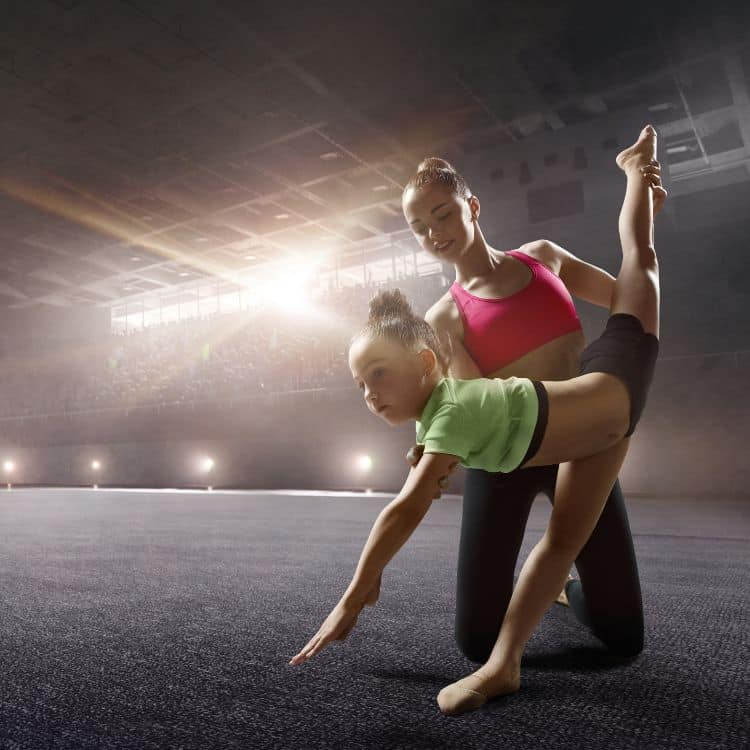
Where can I buy a gymnastics mat for home?
If you are looking for a gymnastics mat to use at home Amazon sells good quality mats of all types including folding mats and inclines.
Read our guide on where in the world different equipment is manufactured, especially if you are keen on equipment made in the USA. From experience, I would recommend any mats made by the following manufacturers:
- Tumble Trak
- Dollamur
- American Athletic Inc (AAI)
- We Sell Mats
- Gymnova
- Continental
FAQs
What to use instead of a gymnastics mat?
There’s not much that can be used instead of a gymnastics mat.
Mats provide a safe cushion and anything less will pose of a risk of injury.
Beds, sofas, lawns and beaches are all used to practice gymnastics but nothing will be as safe or as comfortable as a gymnastics mat!
Can you get lice from gymnastics mats?
Lice tend to spread from head to head so it’s unlikely you will catch lice from a gymnastics mat, but it’s not impossible.
According to Lice Doctor, any shared equipment or furniture carries some risk of spreading lice. If you are using a gymnastics mat at home, the likelihood is that it will only be shared by close friends or family. In which case if a person has Lice they will be more likely to spread it from close contact like cuddling or playing rather than the mat.
Most gymnastics mats have plastic or vinyl covering which is super easy to clean.
Flexi-Roll mats are carpet-covered which makes them harder to clean. You can use a vacuum or carpet cleaner but if the carpet stays wet it will go damp and smell very quickly.
Can gymnastics mats get wet?
Carpet-covered mats like Flexi-Roll cannot get wet. The same goes for denim or cloth type covered mats.
Most folding mats, incline mats and landing mats can get wet without issue as they are covered in plastic or vinyl which can be dried easily. However, if water contacts the foam inside the mat it will cause damage.
The only gymnastics mats that can get wet for long periods of time are inflatable air mats as there is no foam inside.
Gymnastics mats shouldn’t be left outside as the materials will be designed mainly for inside use. Mold will quickly build up in wetter climates and damage the covers and foam inside the mat.
Can I use a yoga mat for gymnastics?
Yoga mats are too thin to perform most types of gymnastics. They will not cushion the impact of landings, meaning you can injure ankles and knees. A folding panel mat will have at least around 2″ of padding making it safer for rolling, cartwheels and similar basic gymnastics skills. A typical yoga mat will have less than 1″ of padding.
So a yoga mat can be used for warming up, stretching and practicing basic shapes but that’s about it.
- How to Do a Back Handspring: Complete Step-by-Step GuideLearning how to do a back handspring is an exciting milestone for any gymnast. It builds confidence, agility, and forms the foundation for advanced tumbling… Read more: How to Do a Back Handspring: Complete Step-by-Step Guide
- How To Get Over a Mental Block In Gymnastics: A Complete GuideGymnastics is a sport that requires not only physical strength and skill but also mental strength. When a gymnast feels like they cannot attempt a… Read more: How To Get Over a Mental Block In Gymnastics: A Complete Guide
- The Best Leotard for Girls in 2025: What to Look ForFinding an ideal leotard for girls isn’t just about picking a dazzling design that sparkles (although it does help!). The leotard has to fit perfectly,… Read more: The Best Leotard for Girls in 2025: What to Look For
- The Best Gymnastics Shorts (Our Top Picks)The best gymnastics shorts are designed to be worn over the top of a leotard providing additional coverage around the upper legs, whilst allowing gymnasts… Read more: The Best Gymnastics Shorts (Our Top Picks)
- Decathlon Leotards – Are They Any Good?If you’re in the market for a new leotard, you may be wondering if Decathlon leotards are any good considering the low cost of their… Read more: Decathlon Leotards – Are They Any Good?
- A Complete Guide to Gymnastics Hand RipsAre you tired of dealing with painful gymnastics rips on your hands from training? Look no further – this article offers a comprehensive approach to… Read more: A Complete Guide to Gymnastics Hand Rips
